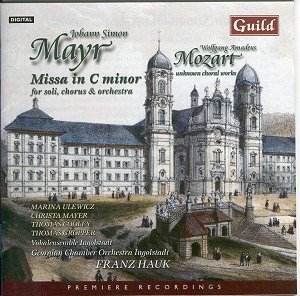 Composer: Katerina Assimis
Composer: Katerina Assimis
Works: Messiaen: Vingt Regards sur L’Enfant Jésus No 15 Le baiser; Rachmaninov: Prelude Op 23 No 4; Prelude Op 32 No 5; Beethoven: Sonata Op 31 No. 2 Tempest; Scriabin: Sonata Op 23 in F sharp minor
Performers: Katerina Assimis, piano
Recording: 2001, unspecified location
Label: EMI
The works presented by Katerina Assimis in this promotional disc evoke a rich tapestry of Russian pianism, reflecting the influences and stylistic contours that characterized the Golden Age of Russian music. The selected repertoire, with the exception of Messiaen’s contemplative piece, predominantly revolves around the Romantic tradition, showcasing a lineage that traces back to the titans of the Moscow School. This context is essential as it frames Assimis’s interpretations, which, while clear and structurally sound, often lack the depth and warmth associated with the great pianists of the early 20th century.
Assimis’s approach to the Messiaen selection reveals a strong sense of architectural awareness. Her structural decision-making is both alert and intelligent, providing a solid foundation for the interpretation. However, the overall sound lacks the warmth and bloom that might enhance the emotional resonance of the piece. This clarity is a double-edged sword; while it allows for an incisive reading, it can also lead to a somewhat clangorous quality, particularly in more intense climaxes across the program. The Rachmaninov Preludes exemplify this dichotomy. In her rendition of Op 32 No 5, a comparison with Peter Katin reveals a significant difference in tempo and narrative flow. Katin’s brisker interpretation—clocking in at 2’57” to Assimis’s more languid 3’23″—exhibits a compelling linearity that Assimis’s performance, while being clear, sometimes flattens into a more static presentation.
The Beethoven Sonata, particularly the second movement, further highlights Assimis’s interpretive choices. Her slower tempo and reliance on heavy staccato create an unusual texture that diverges from historical performance practices. While her use of pedal adds a layer of complexity, it can also detract from the movement’s inherent drive, resulting in a performance that may leave some listeners yearning for the vitality found in interpretations by Schnabel or his contemporaries. Indeed, her treatment of the treble runs, isolating each note rather than allowing them to flow legato, exemplifies a deliberate but perhaps overly restrained approach. In the finale, she maintains a steady tempo, which, while commendable for its consistency, seems to lack the dynamic ebb and flow that characterizes more compelling renditions.
The concluding Scriabin Sonata presents a similar scenario, marked by an apparent emotional reserve. Assimis’s interpretation is not devoid of feeling; rather, it is characterized by a restrained tonal contrast that, while intellectually satisfying, may not resonate as deeply on an emotional level. This dryness in her execution does not negate the technical prowess required for such complex pieces, but it does suggest an aesthetic choice that prioritizes clarity and precision over expressiveness.
Sound quality in this recording is commendable, though the engineering does not fully capture the richness that might be expected from such a repertoire. The sonic landscape lacks the resonant warmth that can envelop the listener, instead presenting a more clinical perspective that may detract from the emotional engagement of the performances.
Assimis offers an intriguing perspective on this well-trodden repertoire, but her interpretations often seem to prioritize technical clarity at the expense of the emotive depth that these works inherently demand. While her structural insights and precision are admirable, the performances occasionally lack the passion and nuance necessary to fully convey the expressive potential of each piece. This disc serves as a thought-provoking exploration of the repertoire, albeit one that may not fully satisfy those seeking the vibrancy of traditional interpretations.



